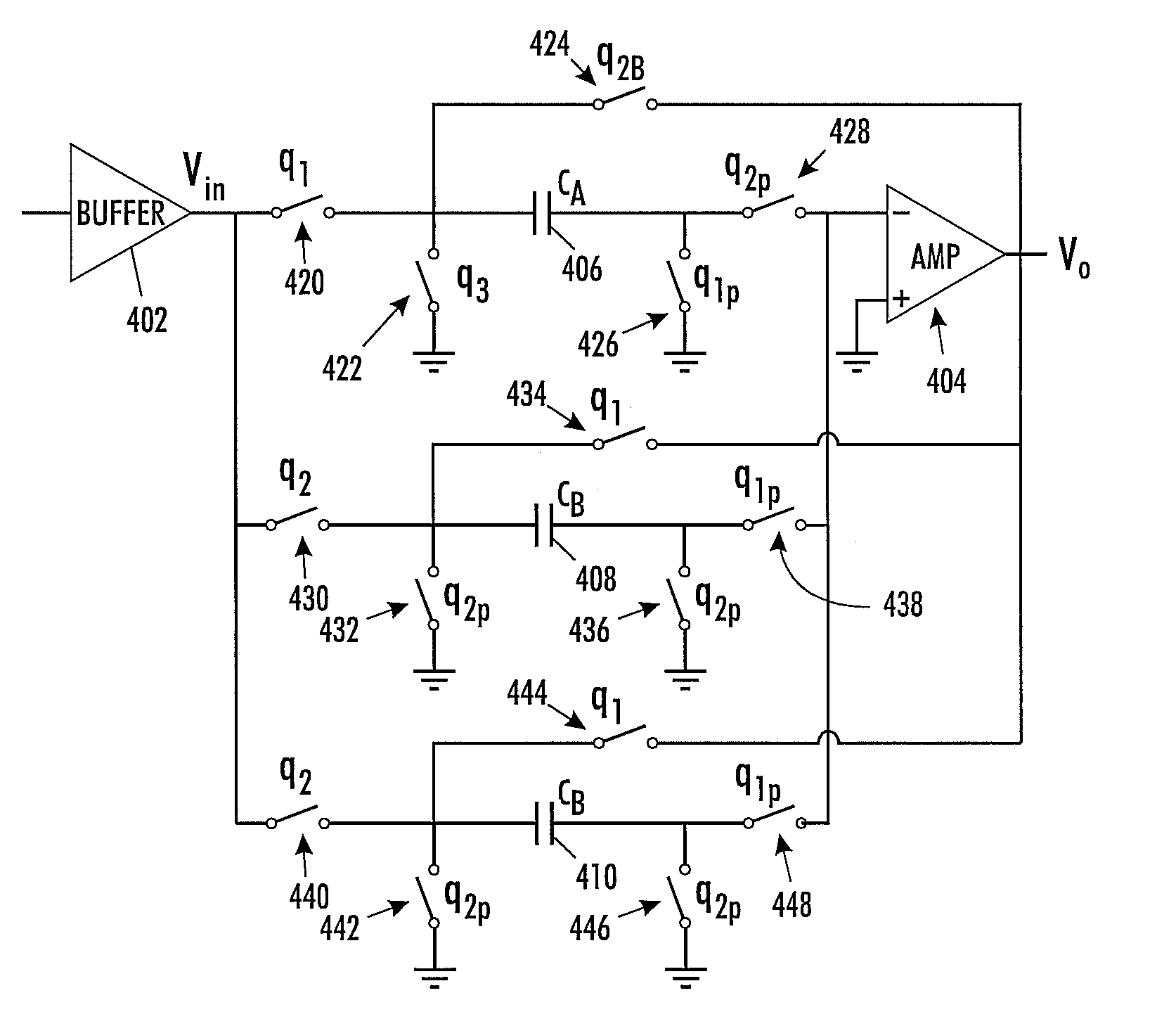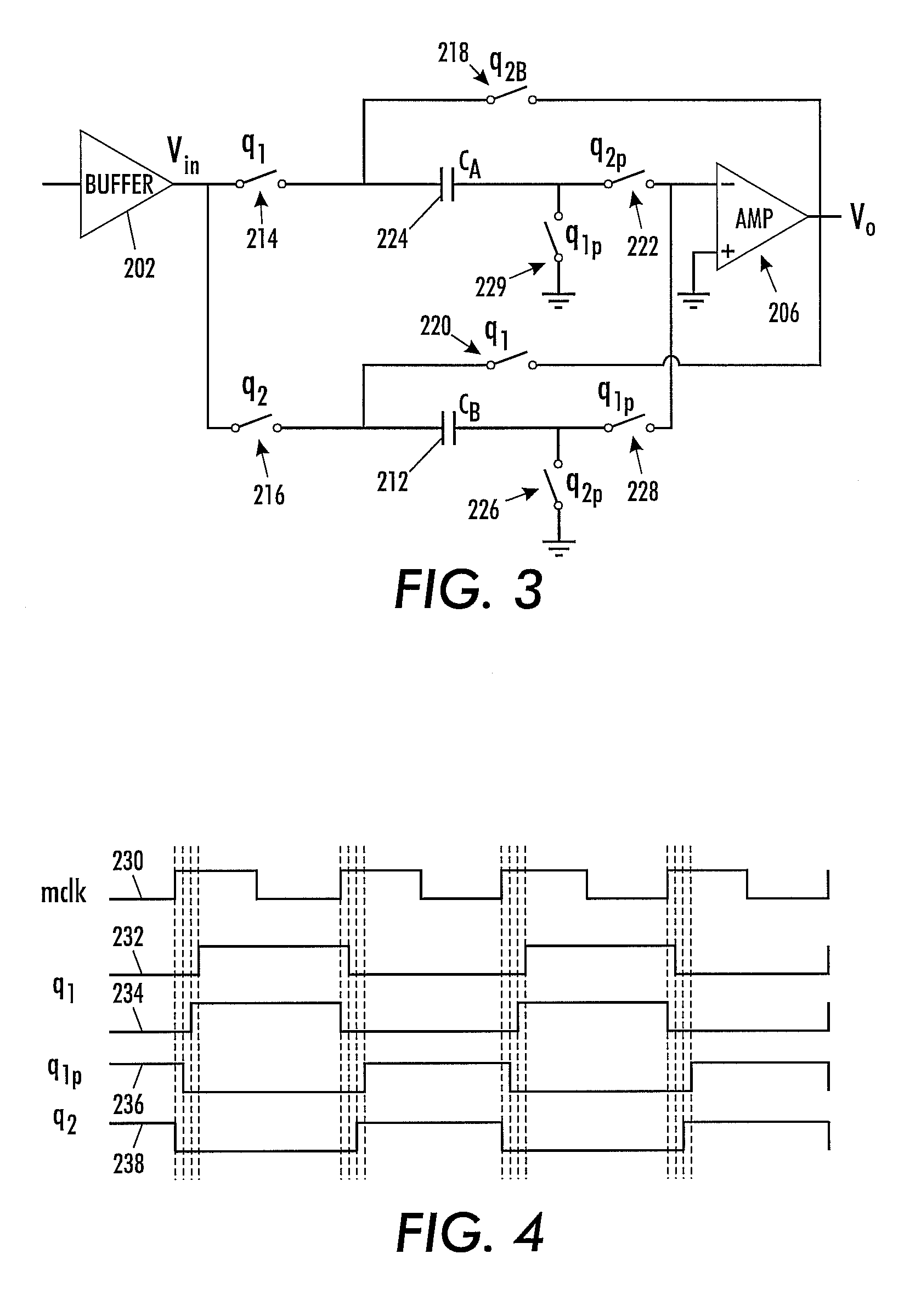Multiple sampling sample and hold architectures
a technology which is applied in the field of multi-sample and hold architecture, can solve the problems of more power consumption of amplifiers, more idle times of one half of a clock signal cycle in each of tracking and hold modes, and shorter available settling time, so as to achieve a given distortion level and shorten the available settling time , the effect of increasing the current capacity
- Summary
- Abstract
- Description
- Claims
- Application Information
AI Technical Summary
Benefits of technology
Problems solved by technology
Method used
Image
Examples
Embodiment Construction
[0026]For a general understanding, reference is made to the drawings. In the drawings, like references have been used throughout to designate identical or equivalent elements. It is also noted that the drawings may not have been drawn to scale and that certain regions may have been purposely drawn disproportionately so that the features and concepts could be properly illustrated.
[0027]A sample and hold circuit uses two capacitors, charging one for a full cycle, while the other is connected to an output of an amplifier, and then switching the roles of the two capacitors. This allows a full cycle to charge the capacitor and hence reduce the current capability and hence power requirements by a factor of 2.
[0028]FIG. 3 illustrates sample and hold architecture using two sampling capacitors. The circuit contains a buffer 202 and a charge amp 206. The circuit also contains two charging capacitors 224 and 212 and switches 214, 216, 218, 220, 222, 226, 228, and 229.
[0029]These switches are c...
PUM
 Login to View More
Login to View More Abstract
Description
Claims
Application Information
 Login to View More
Login to View More - R&D
- Intellectual Property
- Life Sciences
- Materials
- Tech Scout
- Unparalleled Data Quality
- Higher Quality Content
- 60% Fewer Hallucinations
Browse by: Latest US Patents, China's latest patents, Technical Efficacy Thesaurus, Application Domain, Technology Topic, Popular Technical Reports.
© 2025 PatSnap. All rights reserved.Legal|Privacy policy|Modern Slavery Act Transparency Statement|Sitemap|About US| Contact US: help@patsnap.com



